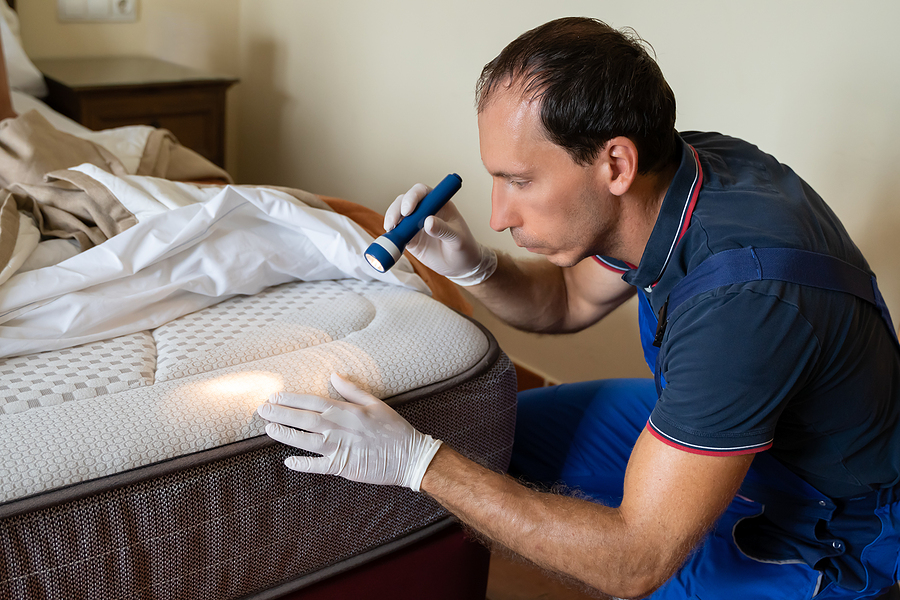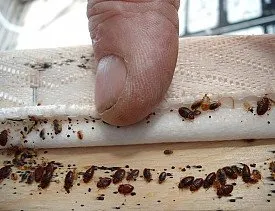Exploring the Science Behind Bed Pest Warm Treatments as a Sustainable Pest Monitoring Technique
In the world of insect management, the pursuit for sustainable and effective solutions stays a continuous search. One such approach that has gotten traction in recent years is making use of warm therapies to combat bed insect invasions. By utilizing the scientific research behind thermal fatality factors for these relentless parasites, warmth treatments supply an appealing alternative to conventional chemical-based strategies. The intricacies of exactly how warmth effectively eliminates bed bugs and the wider effects for sustainable insect monitoring techniques make this a topic worth discovering additionally.
Bed Pest Warmth Therapy Refine

Thermal Death Factor for Bed Bugs
Subjecting bed insects to elevated temperatures beyond their thermal tolerance variety is important for accomplishing efficient elimination in warm therapy procedures. By getting to and preserving temperature levels over the thermal death point for bed bugs, pest management professionals can ensure comprehensive elimination of bed pest populaces, consisting of hard-to-reach locations where chemical treatments may be less reliable. Recognizing the thermal fatality point for bed bugs is important for executing successful warmth therapy methods and accomplishing sustainable pest management end results.
Benefits of Heat Treatments
Having developed the important thermal death point for bed pests, it is essential to currently check out the significant benefits that warm treatments supply in successfully removing these resilient parasites. Warm treatments existing a number of vital advantages when compared to typical chemical techniques. Among the primary benefits is that heat can pass through deep into holes and cracks where bed pests hide, making certain that even one of the most hard-to-reach areas are heated up to lethal temperature levels. This comprehensive technique not only kills real-time insects yet also targets bed insect eggs, preventing future invasions.
Furthermore, warmth treatments are environmentally pleasant and safe, making them a lasting parasite administration strategy. Unlike chemical pesticides, warm therapies do not leave harmful residues that can position dangers to human health and wellness or the setting. This facet is specifically vital in delicate environments such as medical facilities, schools, and suburbs where chemical use may not be desirable.
Additionally, heat treatments have try this out a high success price in removing bed pest problems in a solitary therapy, minimizing the requirement for several check outs and lessening interruption to residents. This efficiency not only conserves time and cash however likewise offers assurance to those dealing with bed bug troubles.
Performance of Warm Treatment

Research researches have consistently shown the effectiveness of warm treatments in accomplishing a high rate of bed insect mortality. Appropriately conducted warm treatments can reach all the splits and gaps where bed pests may be nurturing, ensuring a detailed approach to elimination. Heat therapies have actually the added benefit of eliminating bed pest look at this website eggs, which are frequently immune to typical chemical treatments. Generally, the performance of heat treatments in removing bed pest infestations makes them a lasting and dependable bug monitoring strategy.
Lasting Parasite Management Benefits
Executing sustainable pest management techniques provides long-lasting benefits for both the atmosphere and public health. anonymous By utilizing approaches such as warmth therapies for insect control, we can reduce the dependence on damaging chemical pesticides that can have negative impacts on communities and human health - exterminator. Lasting bug monitoring methods aid in maintaining biodiversity by targeting particular parasites without hurting non-target organisms, thereby keeping a balanced ecosystem
In addition, sustainable parasite administration techniques contribute to the total health and wellness and health of the public. By decreasing exposure to poisonous chemicals utilized in typical insect control methods, warmth treatments give a safer option for pest administration in household, commercial, and public areas. This reduction in chemical use additionally helps in stopping chemical residues from polluting water, air, and soil, securing ecological quality.
Final Thought
To conclude, bed bug warm therapies have actually been shown to be a reliable and lasting bug monitoring strategy. The thermal death point for bed insects makes them at risk to warmth therapies, which have countless benefits over traditional chemical treatments. The efficiency of warm therapies in removing bed pest problems while minimizing environmental impact highlights the capacity of this technique as a sustainable option for bug control.
The bed pest warmth therapy procedure entails elevating the temperature level within ravaged locations to a degree that properly removes bed pests and their eggs. By getting to and keeping temperature levels over the thermal death point for bed bugs, pest management professionals can ensure comprehensive elimination of bed pest populaces, consisting of hard-to-reach locations where chemical treatments may be less reliable. One of the key benefits is that warm can penetrate deep into splits and holes where bed insects hide, ensuring that also the most hard-to-reach locations are heated up to deadly temperatures. Unlike chemical therapies that might leave behind resistant populations, warmth therapies supply a environmentally pleasant and non-toxic solution that can pass through deep into furniture, wall surfaces, and other hard-to-reach areas where bed pests hide.
The thermal fatality factor for bed bugs makes them at risk to warm treatments, which have countless benefits over conventional chemical therapies.